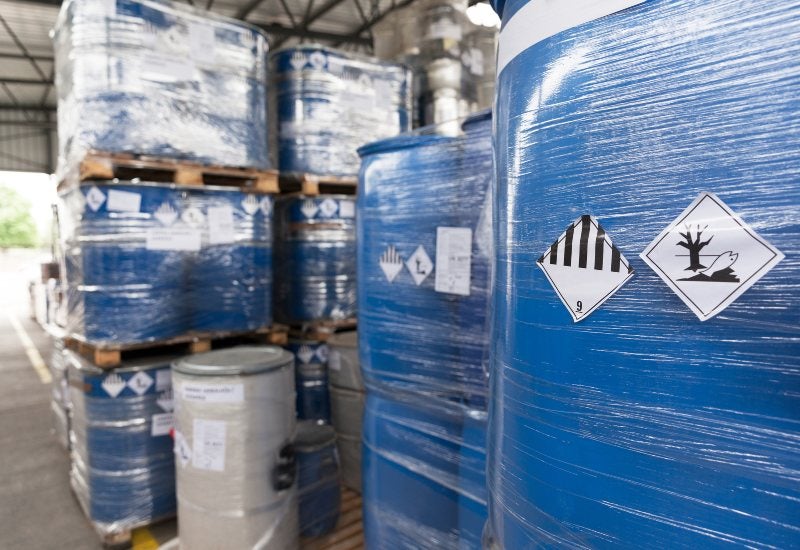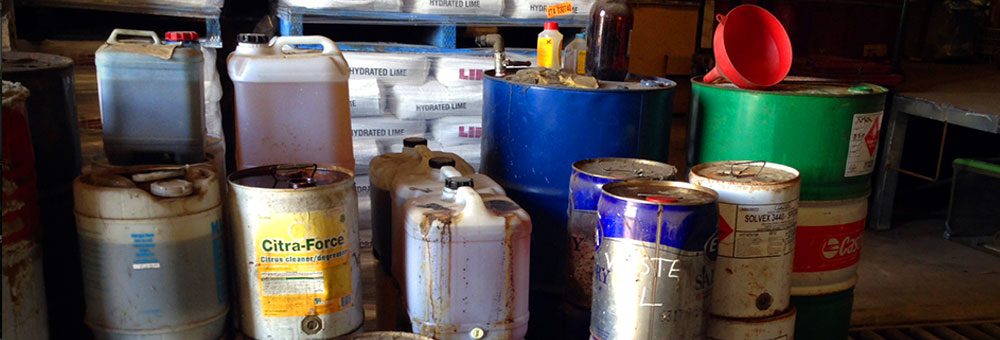Industrial Wastewater Treatment: Advanced Techniques for Effective Monitoring
Industrial Wastewater Treatment: Advanced Techniques for Effective Monitoring
Blog Article
How Fluid Waste Disposal Functions: A Comprehensive Introduction of Techniques and Technologies Used

Review of Liquid Waste Types
The complexity of fluid waste types requires a thorough understanding of their qualities and effects for disposal. Liquid waste can broadly be categorized into numerous kinds, consisting of commercial, community, agricultural, and dangerous waste. Each classification displays distinct homes, needing specific monitoring techniques to minimize environmental and health threats.
Industrial liquid waste stems from making procedures and commonly contains a series of contaminants, such as hefty metals, solvents, and organic compounds. Municipal fluid waste, largely comprising wastewater from families and business establishments, consists of natural matter, nutrients, and microorganisms (industrial wastewater treatment). Agricultural fluid waste, consisting of runoff from farms, may consist of fertilizers, pesticides, and pet waste, posing threats to water top quality and ecosystems
Hazardous liquid waste is characterized by its poisoning, reactivity, or possible to trigger injury. This group consists of substances like acids, bases, and specific chemicals that require stringent handling and disposal procedures. Comprehending these varied liquid waste kinds is crucial for creating reliable disposal techniques and making sure compliance with environmental regulations. Proper classification and characterization are important for implementing suitable therapy techniques and lessening the damaging influences on public health and wellness and the setting.
Physical Therapy Methods

Screening is the initial action, where larger fragments and particles are gotten rid of from the fluid waste using screens or grates. In sedimentation tanks, much heavier bits resolve at the base, developing a sludge layer, while the made clear liquid can be additional treated.
Purification is one more important method that involves passing the fluid via porous products, such as sand or membrane layers, to record smaller sized fragments. This step boosts the quality of the liquid, making it suitable for subsequent therapy processes.

Chemical Treatment Techniques
Chemical treatment methods are important for properly managing liquid waste, especially in dealing with liquified and colloidal contaminants that physical techniques might not adequately get rid of. These methods make use of different chemical representatives to reduce the effects of, precipitate, or transform unsafe substances into much less harmful kinds.
One typical technique is coagulation and flocculation, where chemicals such as alum or ferric chloride are contributed to promote the aggregation of put on hold bits. This process enhances sedimentation, permitting much easier elimination of the resulting sludge. In addition, oxidation processes, utilizing agents like chlorine or ozone, are used to break down complicated natural compounds and virus, making the waste more secure for discharge these details or more treatment.
Neutralization is one more crucial method, which changes the pH of acidic or alkaline waste streams to neutral degrees, stopping possible injury to downstream systems and the atmosphere. Furthermore, progressed oxidation procedures (AOPs) make use of mixes of oxidants and ultraviolet light to deteriorate relentless toxins, accomplishing a greater degree of therapy efficiency.
Biological Therapy Procedures
Biological treatment processes play an important function in the monitoring anchor of liquid waste by using microbes to disintegrate organic issue and decrease pollutant levels. These processes can be generally classified right into cardiovascular and anaerobic therapies, each using particular microbial areas to attain efficient waste deterioration.
Aerobic therapy involves using oxygen to facilitate the break down of natural products by microorganisms. This process is typically implemented in triggered sludge systems, where aeration tanks provide a helpful atmosphere for microbial growth, causing the oxidation of organic pollutants. The resultant biomass can be divided from treated effluent through sedimentation.
In comparison, anaerobic treatment occurs in the lack of oxygen, counting on different microorganisms to break down raw material. This approach is specifically beneficial for high-strength waste, as it generates biogas, a renewable resource resource, while minimizing sludge manufacturing. Technologies such as anaerobic digesters are often used in industrial and municipal applications.
Both anaerobic and aerobic organic treatments not just minimize the environmental influence of liquid waste yet likewise promote resource healing, making them vital parts of sustainable waste monitoring techniques. Their efficiency, flexibility, and effectiveness support their extensive execution throughout various markets.
Emerging Technologies in Disposal
Cutting-edge approaches to liquid waste disposal are quickly advancing, driven by developments in modern technology and an increasing focus on sustainability. Among these emerging modern technologies, membrane layer bioreactors (MBRs) have acquired grip for their capacity to incorporate organic treatment with membrane purification, causing top quality effluent that can be recycled in straight from the source numerous applications. MBRs enable smaller footprints and more efficient operations contrasted to traditional systems.
Another encouraging growth is making use of anaerobic food digestion integrated with nutrient recuperation modern technologies, which not just deals with fluid waste yet likewise generates biogas and recuperates important nutrients like nitrogen and phosphorus. This double benefit enhances source effectiveness and minimizes environmental impact.
Additionally, advanced oxidation procedures (AOPs) are being taken on for the destruction of complicated natural toxins. These approaches use powerful oxidants and catalysts to damage down pollutants at the molecular level, offering a very efficient option for challenging waste streams.
Furthermore, the combination of expert system and artificial intelligence in waste administration systems is maximizing functional efficiency and anticipating upkeep, resulting in reduced prices and boosted ecological compliance. These modern technologies show a significant change towards even more efficient and sustainable liquid waste disposal practices.
Verdict
In conclusion, efficient fluid waste disposal demands an extensive understanding of numerous techniques and modern technologies. By continually advancing these approaches, it ends up being feasible to attend to the expanding challenges associated with liquid waste, eventually adding to environmental protection and resource healing.
Fluid waste disposal is a crucial element of ecological administration, calling for a comprehensive understanding of various methods and innovations tailored to different waste types. Fluid waste can extensively be classified into a number of types, including industrial, local, farming, and harmful waste. Agricultural fluid waste, including overflow from farms, may include fertilizers, pesticides, and animal waste, posing risks to water top quality and ecological communities.
Different physical treatment methods play a vital role in managing liquid waste effectively - industrial wastewater treatment.In verdict, efficient fluid waste disposal necessitates an extensive understanding of different strategies and innovations
Report this page